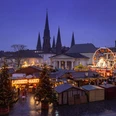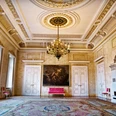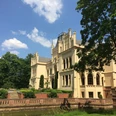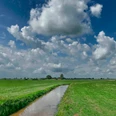History of the castle
The castle dates back to the early 17th century for the most part. Count Anton Günther von Oldenburg had it built from sandstone on the remains of an old castle in the Renaissance style. His successors added several side wings, decorated the façade with typical Rococo ornamentation and promoted and collected art. The palace hall, the Marble Hall and other state rooms are impressive examples of this, which have been preserved to this day.
The interiors
The late classicist oval reception room at today's museum entrance and the Idyll Room with all 43 paintings from the Idyll Cycle by Johann Heinrich Wilhelm Tischbein, the court painter to Duke Peter Friedrich Ludwig, are considered outstanding. Even though not all of the historical furnishings have survived the years, rooms such as these convey the splendour and beauty in which Oldenburg's rulers once lived.
Exhibitions at Oldenburg Palace
The museum also hosts changing exhibitions and has two other locations: The Augusteum is home to the Old Masters Gallery, while the Prinzenpalais houses the New Masters Gallery with paintings from the 19th century onwards.
Inextricably linked to the palace is the palace garden, which Duke Peter Friedrich Ludwig had laid out as an English-style landscape garden at the beginning of the 19th century. Old solitary trees, watercourses, flowerbeds and historic buildings such as the tea pavilion and the court gardener's house still characterise the garden today.
Good to know
Openings
Payment methods
Accessibility
License (master data)
Oldenburg Tourismus und Marketing GmbH
Nearby






